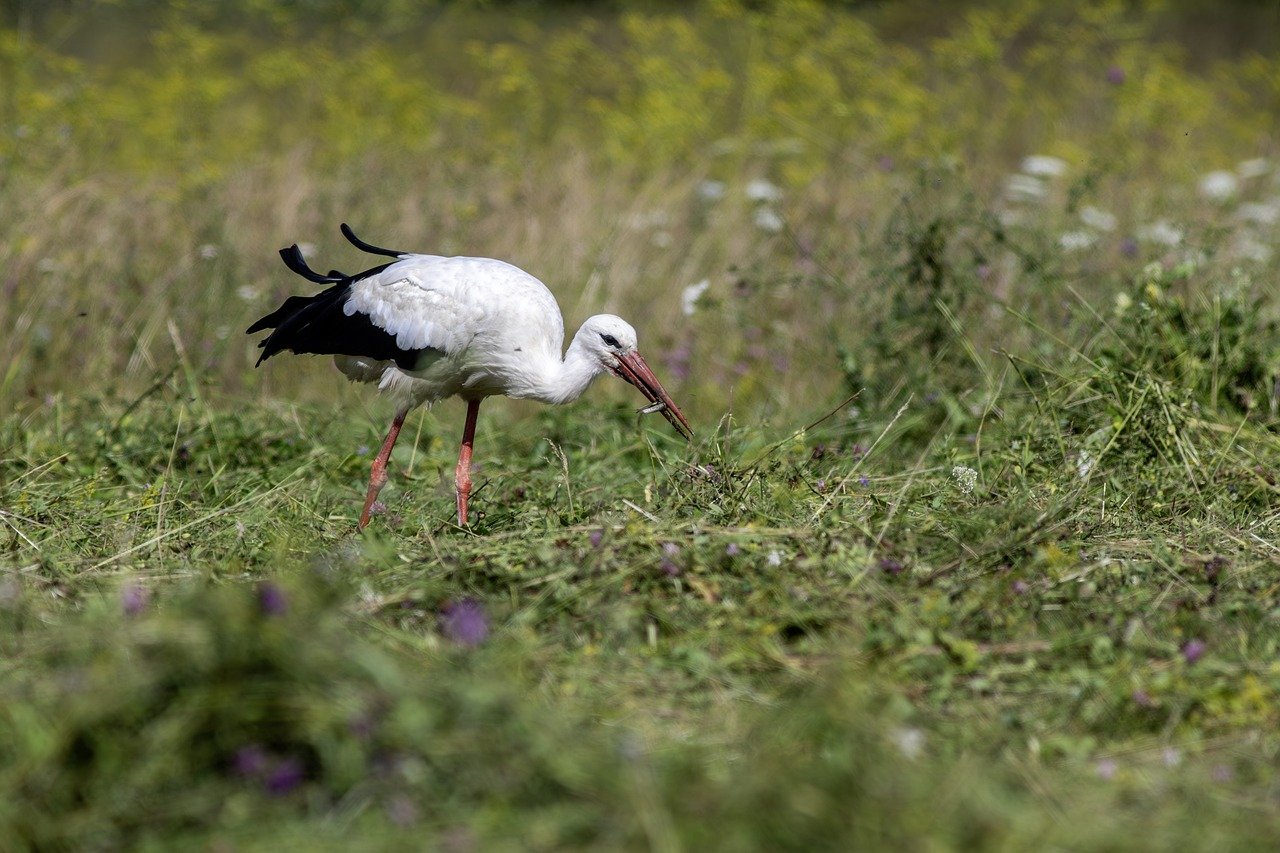Here’s a full natural history overview of the White Stork (Ciconia ciconia), one of Europe’s most recognizable and culturally significant birds:
White Stork (Ciconia ciconia)
Taxonomy & Classification
- Kingdom: Animalia
- Phylum: Chordata
- Class: Aves
- Order: Ciconiiformes
- Family: Ciconiidae (storks)
- Genus: Ciconia
- Species: C. ciconia
General Description
- Size: 100–115 cm tall; wingspan 155–215 cm.
- Weight: 2.5–4.5 kg.
- Plumage:
- Predominantly white body.
- Black flight feathers on wings.
- Long, pointed red bill.
- Long red legs.
- Sexual dimorphism: Minimal; males slightly larger than females.
- Flight: Soaring and gliding with outstretched wings; neck and legs fully extended in flight.
Behavior & Lifestyle
- Migratory species:
- Breeds in Europe and western Asia.
- Winters in sub-Saharan Africa and parts of India.
- Foraging:
- Walks slowly in fields, wetlands, and grasslands, searching for prey.
- Opportunistic feeder.
- Social behavior:
- Often seen in loose flocks, especially during migration.
- Highly faithful to nesting sites.
- Vocalization: Storks are generally silent but produce loud bill-clattering, especially during courtship and at the nest.
Diet
- Primary prey: Insects, frogs, toads, lizards, snakes, and fish.
- Other food: Small mammals (voles, mice), bird chicks, and even earthworms.
- Opportunistic hunters, feeding on whatever small animals are abundant locally.
Reproduction & Life Cycle
- Breeding season: April–July.
- Nest:
- Huge stick platforms built on rooftops, chimneys, trees, or poles.
- Reused and enlarged each year; some nests exceed 2 m across and weigh hundreds of kilograms.
- Clutch size: 3–5 eggs (white).
- Incubation: 33–34 days, shared by both parents.
- Fledging: Young fledge at ~55–65 days but may stay near the nest for several more weeks.
- Pair bond: Usually monogamous per season; pairs often reunite at the same nest each year.
Habitat
- Open lowlands, farmland, pastures, wetlands, and meadows.
- Prefers areas with a mix of open fields (for foraging) and tall structures/trees (for nesting).
Geographic Range
- Breeding: Across most of Europe (except far north and UK, though reintroduction has begun), into western Asia.
- Wintering: Sub-Saharan Africa, parts of southern Asia.
- Migration routes:
- Western route: Iberia → Strait of Gibraltar → West Africa.
- Eastern route: Balkans → Middle East → East Africa/India.
Ecological Role
- Predator: Controls populations of amphibians, insects, and rodents.
- Prey: Eggs and chicks vulnerable to ravens, martens, and birds of prey.
- Cultural role: Strongly associated with humans — often nesting in villages and towns, considered symbols of fertility, luck, and renewal.
Special Adaptations
- Thermal soaring: Uses warm air currents to migrate long distances with minimal energy.
- Long legs & bill: Perfectly adapted for wading and catching prey in grasslands and wetlands.
- Site fidelity: Strong instinct to return to traditional nest sites year after year.
Conservation Status
- IUCN Red List: Least Concern.
- Population trend: Increasing in many areas due to conservation projects.
- Threats:
- Habitat loss from wetland drainage and intensive agriculture.
- Electrocution on power lines.
- Illegal hunting during migration.
- Conservation measures:
- Nest platforms on poles and rooftops.
- Wetland restoration.
- Legal protection in Europe and Africa.
Interesting Facts
- White Storks are among the most famous migratory birds in folklore. In many cultures, they are believed to “deliver babies.”
- Nests are used for decades — some known to be over 100 years old.
- They can migrate up to 10,000 km between breeding and wintering grounds.
- Increasingly, some populations in Spain and Portugal have stopped migrating, taking advantage of open landfills for food.
Visited 860 times, 2 visit(s) today
Views: 1274
Subscribe to the newsletter:
